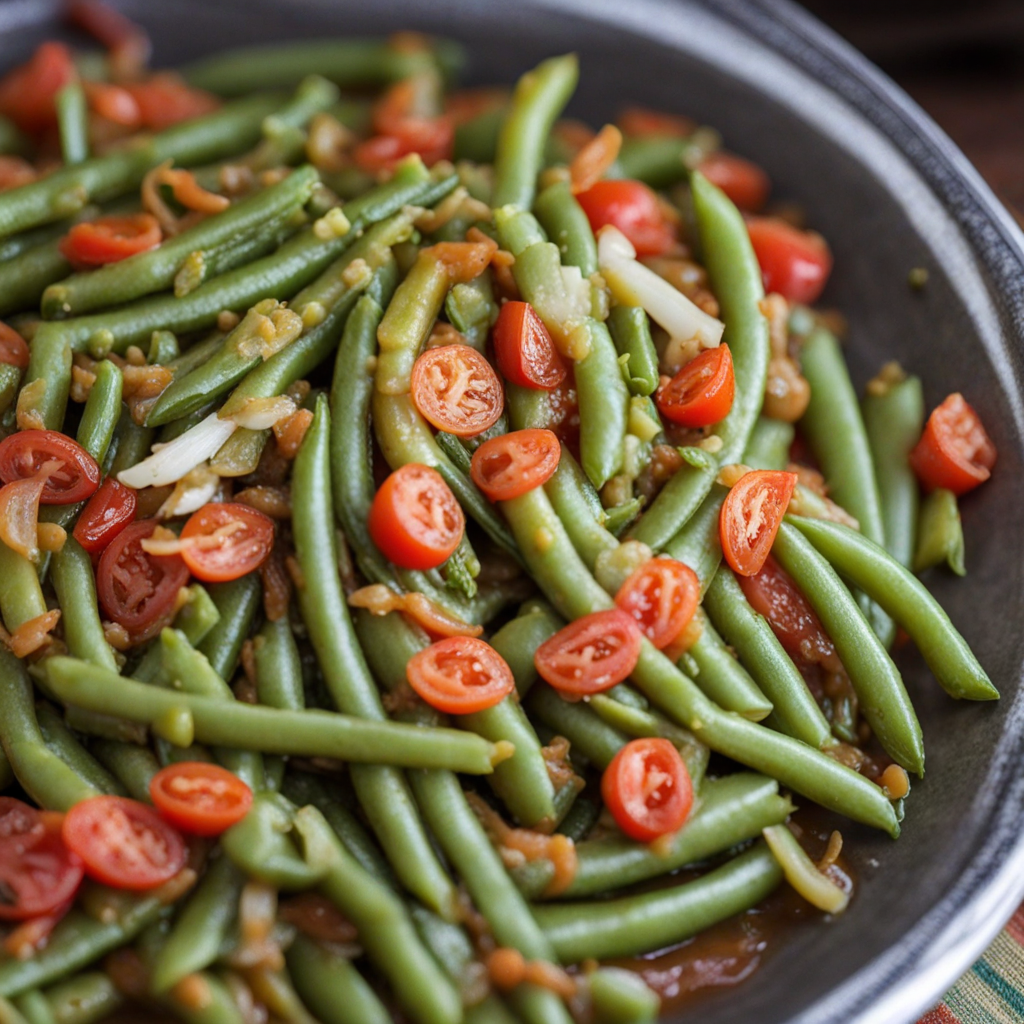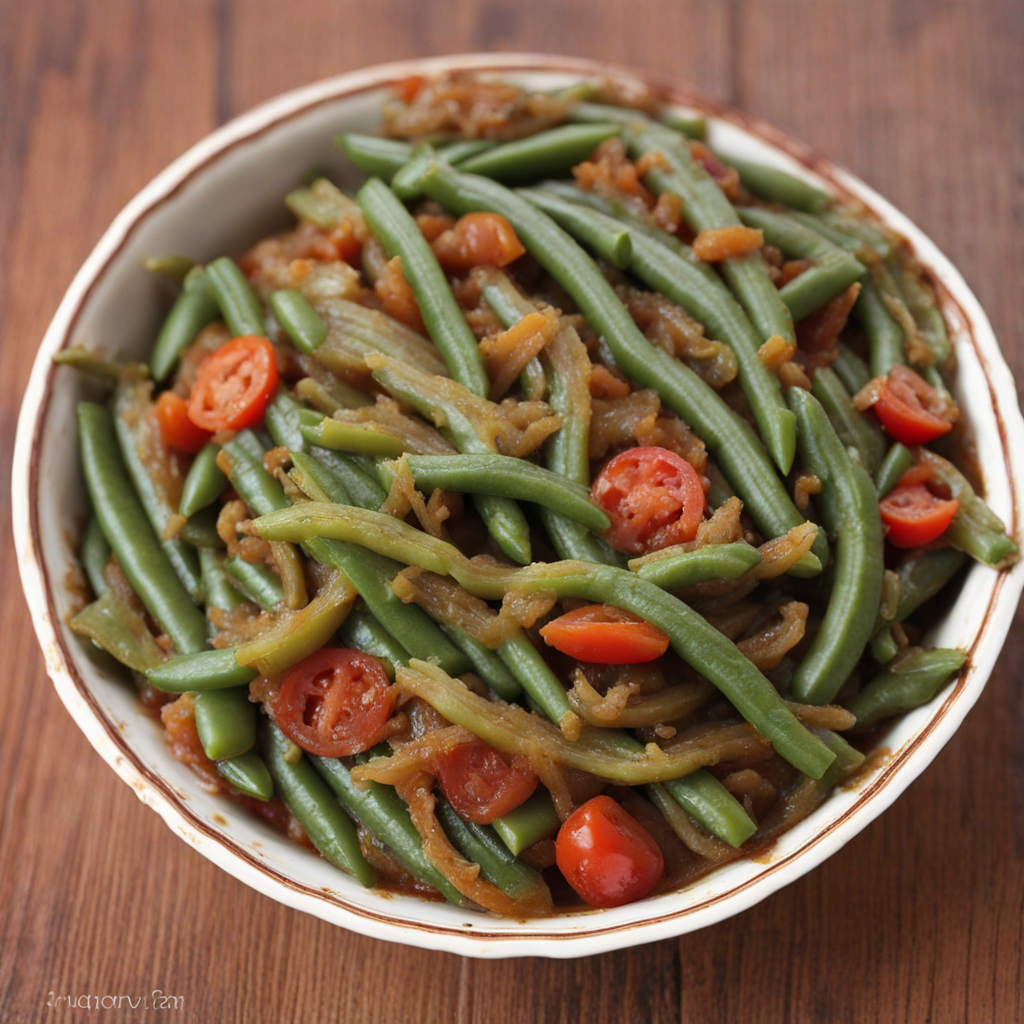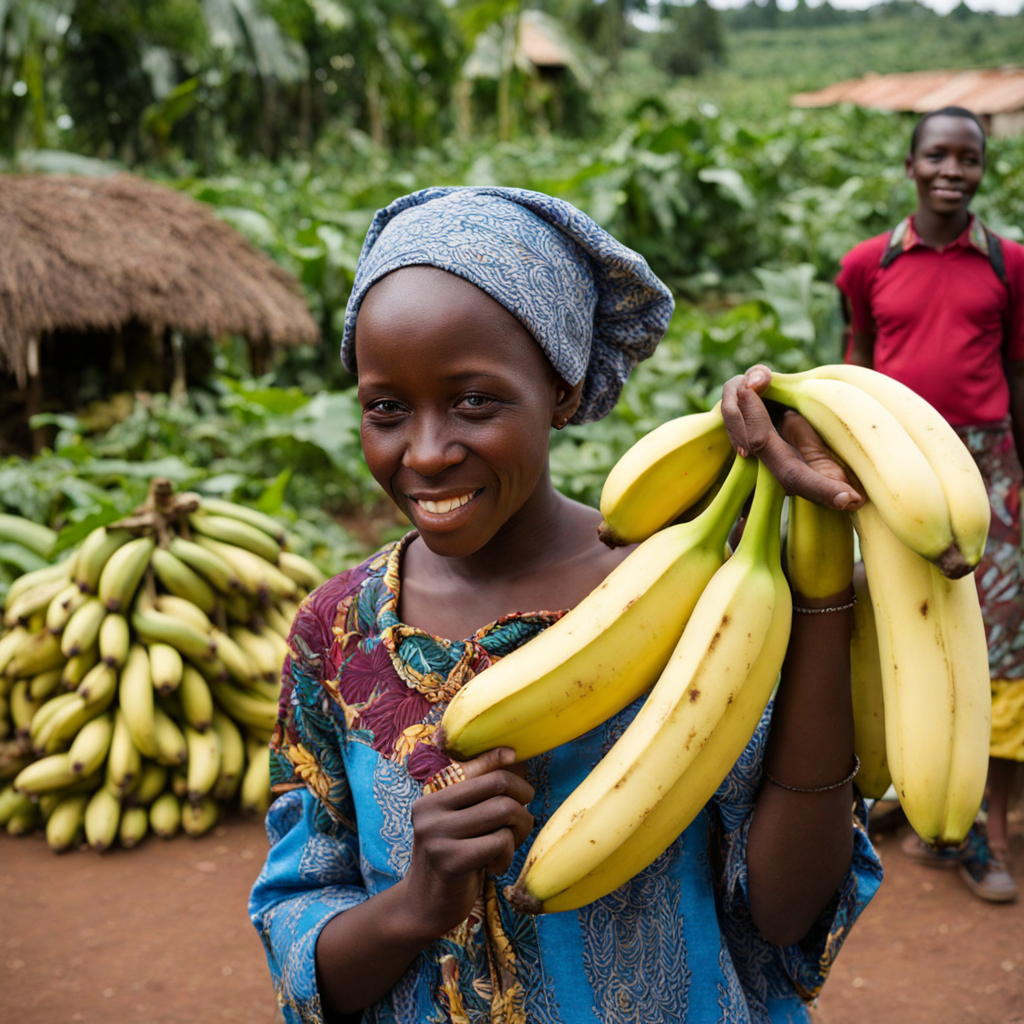Intoryi
Intoryi is a delightful Rwandan dish that showcases the rich culinary traditions of the country. This savory food is primarily made from a mixture of fresh beans and groundnuts, which provide a hearty and nutritious base. The beans are typically cooked until soft, then blended with roasted groundnuts to create a creamy, nutty texture that is both comforting and satisfying. The dish is often seasoned with local spices and herbs, infusing it with a unique flavor profile that highlights the natural ingredients used in its preparation. The preparation of Intoryi is a labor of love, often involving the entire community in its making. The beans are sourced from local farms, ensuring freshness and supporting the agricultural economy. After cooking, the mixture is traditionally served alongside staple Rwandan accompaniments such as plantains or cassava, which complement the rich flavors of the dish. The combination of textures—creamy, crunchy, and soft—creates a delightful eating experience that transports you straight to the heart of Rwanda. Beyond its taste, Intoryi represents the warmth and hospitality of Rwandan culture. It is often enjoyed during communal gatherings and celebrations, where sharing food strengthens bonds among family and friends. As you savor Intoryi, you not only enjoy a delicious meal but also partake in a tradition that celebrates community, togetherness, and the vibrant agricultural heritage of Rwanda.
How It Became This Dish
The Culinary Journey of Intoryi: A Rwandan Delight #### Origins of Intoryi Intoryi, a traditional dish from Rwanda, is made primarily from the leaves of the amaranth plant, which is known locally as "Intoryi" itself. This vibrant green leafy vegetable has been an integral part of Rwandan cuisine for centuries, deeply intertwined with the agricultural practices and the cultural fabric of the nation. The origins of Intoryi can be traced back to the ancient farming communities of the region, where subsistence agriculture formed the backbone of life. Amaranth is native to the Americas but was introduced to Africa, where it adapted well to the local climate and became a key crop. The cultivation of amaranth in Rwanda is a testament to the country's agricultural heritage. The plant thrives in the high-altitude zones of the Rwandan countryside, where farmers have cultivated it for its nutritious leaves and seeds. Historically, Intoryi was not just a food source but also a symbol of resilience and sustenance in times of hardship. It is rich in vitamins and minerals, making it a staple in the diets of Rwandans, especially in rural areas where access to a variety of foods may be limited. #### Cultural Significance Intoryi holds a special place in Rwandan culture, embodying the values of communal living and shared resources. In traditional Rwandan society, food is a powerful medium for social bonding and community identity. Intoryi is often prepared during family gatherings, celebrations, and communal feasts, where it is served alongside staples like Ugali or Isombe (cassava leaves). The preparation of Intoryi is often a communal activity, where families and neighbors come together to harvest, wash, and cook the leaves, reinforcing social ties and cultural traditions. Moreover, Intoryi is significant in Rwandan folklore and traditional medicine. The leaves are not only consumed as food but are also believed to possess healing properties, used to treat various ailments ranging from digestive issues to inflammation. The cultural practices surrounding Intoryi reflect a profound respect for nature and the belief in the interconnectedness of food, health, and community well-being. #### Development Over Time As Rwanda has evolved through the ages, so too has the culinary landscape surrounding Intoryi. The post-colonial period saw significant changes in agricultural practices and food systems, influenced by globalization and modernization. The introduction of new agricultural techniques and hybrid seeds has led to increased production of amaranth, although the traditional methods of cultivation still persist in many rural areas. In recent decades, there has been a resurgence of interest in traditional foods, driven by a global movement towards sustainable and organic farming. This has rekindled appreciation for Intoryi not only as a source of nourishment but also as part of Rwanda’s rich cultural heritage. As urbanization has increased, Intoryi has found its way into markets and restaurants, where it is often featured in modern interpretations of traditional dishes. Chefs have begun to experiment with Intoryi, incorporating it into salads, stews, and even gourmet dishes, thereby introducing it to a wider audience beyond Rwanda’s borders. One of the most notable developments in the culinary scene is the recognition of Intoryi as a superfood. Nutritionists and health advocates have highlighted its high protein content, antioxidants, and essential amino acids, promoting it as a vital food source in the fight against malnutrition. This has spurred initiatives to promote the cultivation and consumption of Intoryi, particularly among young people and in urban areas, where dietary shifts often lean towards processed foods. #### Preparing Intoryi: A Culinary Art The preparation of Intoryi is a cherished art passed down through generations. The leaves are typically harvested young, as they are more tender and flavorful. After washing and chopping the leaves, they can be sautéed with onions, tomatoes, and spices, or cooked with groundnut (peanut) paste to create a rich, creamy dish. The versatility of Intoryi allows for a variety of preparations, reflecting regional variations and personal preferences. In addition to savory dishes, Intoryi can also be used in traditional Rwandan beverages. In some regions, the leaves are blended with water and fermented to create a nutritious drink, showcasing the ingenuity of Rwandan culinary practices. #### Intoryi in Modern Rwanda Today, Intoryi stands as a symbol of national pride and cultural heritage. As Rwanda continues to grow as a tourist destination, culinary tourism has become increasingly popular. Travelers seeking authentic experiences are often drawn to traditional dishes like Intoryi, which tell the story of the land and its people. Culinary festivals and events celebrate local ingredients, and Intoryi has become a star attraction, educating both locals and tourists about its significance and versatility. Moreover, the Rwandan government and various NGOs have recognized the importance of promoting traditional foods as part of a broader strategy to ensure food security and combat malnutrition. Programs aimed at educating farmers about sustainable agricultural practices and the nutritional benefits of traditional crops have revitalized interest in Intoryi and other indigenous foods. #### Conclusion Intoryi is more than just a dish; it embodies the spirit of Rwanda—resilience, community, and a profound connection to the land. Its journey through history reflects the broader narratives of agricultural practices, cultural identity, and the ongoing evolution of culinary traditions. As Rwandans continue to embrace their heritage while adapting to modern influences, Intoryi remains a staple that nourishes both body and soul. Whether enjoyed at a family gathering, a local market, or a gourmet restaurant, Intoryi will undoubtedly continue to play a vital role in the culinary landscape of Rwanda for generations to come.
You may like
Discover local flavors from Rwanda







